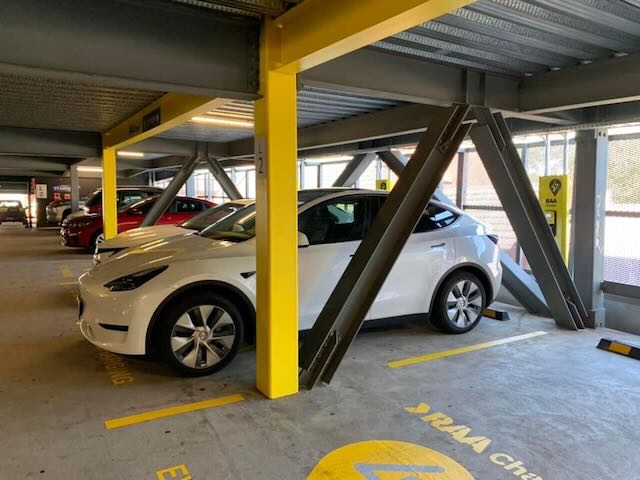Last updated on February 11th, 2024 at 08:48 am
The majority of trips a suburban driver makes in a day averages 40 kms, which is a round trip number. With this type of driving and having a charger installed at home, it is unlikely for EV drivers to suffer from range anxiety, the fear of running out of power between charging points. But what happens when EV drivers venture into the wide open landscape of regional Australia? Is it possible to travel comfortably without fear of running out of power?
Suburban driving
In 2021 we took the plunge into electric vehicles and bought an MG EV, the first electric vehicle which was affordable at $44,000 drive away. For a while we used the 10 A charger which was supplied with the vehicle and would top up the battery with free charging at the 50 kW charger near the Central market. The 10 A charger took 12 hours to fully charge the car so we eventually decided to install a 7 kW charger on the wall of the carport. This decreased the charging time to around 4-6 hours. On a full charge, It was possible to have a round trip to Tanunda in the Barossa valley without the need to charge. At the time, my partner was still working so we could enjoy travelling on the weekend and have the car fully charged by Sunday, ready for the work week.
Long distance driving today in Australia
The ability to travel long distances in the Eastern States has been greatly augmented by the Automobile Associations rolling out fast charging stations. The NRMA has constructed a supercharging network which starts at Tanunda and crosses the riverland to Sydney. From there you can take advantage of the charging ‘super highway’ which extends the length of coastal Queensland.
Rosie Barnes, who hosts a video channel: Engineering with Rosie, travelled between Sydney, Canberra, Melbourne as well as other points along the way. Learn how Rosie discovered that charging is hampered by the sparsity of locations, charger point popularity, and whether the chargers are working. It was also affected by the vehicle range, which is defined by a standard referred to as the WLTP or Worldwide Harmonised Light Vehicle Test Procedure. This standard only guarantees the distance assuming you drive within its control parameters. Bryce Gaton (2019) in Why are new electric vehicle range estimates often so different? explains this in much more detail.
South Australia
In South Australia, the RAA has been awarded the contract to build a fast charging network to connect the South East, Port Augusta and across to Port Lincoln. In the west the network will extend to Ceduna right to the border along the Nullarbor. This project will be completed by the end of 2023.
Living in the Fleurieu
Since leaving the safe confines of inner suburban Adelaide for the wilds of the Fleurieu peninsula, there is no 7 kW charger at home to top up the EV battery. We have been living in a caravan park while waiting for a house to be built. At first we thought we could charge at the second 15 A outlet, but soon discovered that the extension cord overheated while charging. Instead we now charge entirely using publicly available charging stations. The closest fast chargers (50 kW) are in Tonsley Park, about 30 minutes by expressway. Park Holme in Marion council about 10 kms from Tonsley Park has two Jolt chargers, which are 25 kW. Within McLaren Vale, there is one council charger (7 kW), which is at the McLaren Vale Visitor Centre on Main St. near Victor Harbor road. It takes around 30-40 minutes to charge the car from 30% to 80-90% using the 50 kW chargers, about double that on a Jolt charger, and the council charger takes 3-4 hours. We have had to become strategic about keeping the car charged. When heading into the city, we take advantage of the fast chargers, and when we are travelling locally, we top up at the council charger.
And the future?
A recent British study in an article by Bryce Gaton (2022) Electric car range anxiety is dying a public death, indicates that as the EV market matures in terms of long range vehicles on offer and charging networks expand to cover the entire country with fast chargers in frequencies under 200 Kw, range anxiety will disappear. Until then, Bridie Schmidt (2021), Range anxiety? Nine electric car hacks you need to know, provides some ideas on how to employ strategies to ward off the fear of getting to where you want to go.
